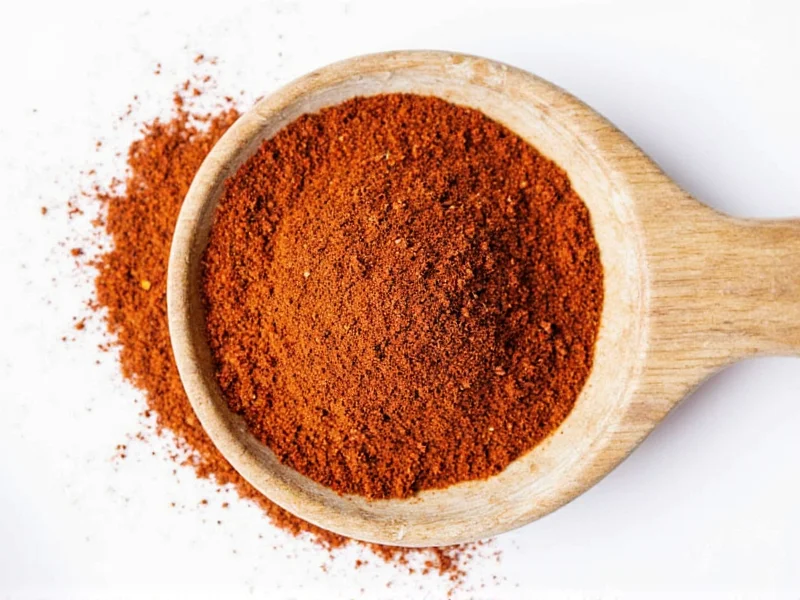Creating exceptional fajitas starts with understanding what makes the best fajita seasoning stand out from ordinary spice blends. While store-bought options are convenient, they often contain fillers and preservatives that diminish flavor quality. The most flavorful fajita seasoning recipes prioritize fresh, high-quality spices that work in harmony to enhance rather than overpower the natural taste of your proteins and vegetables.
Essential Components of Authentic Fajita Seasoning
Authentic fajita seasoning isn't just about heat—it's about creating a complex flavor profile that complements grilled meats and vegetables. The foundation of any homemade fajita seasoning recipe includes:
- Chili powder - Provides earthy base notes (not to be confused with cayenne)
- Ground cumin - Adds warm, nutty depth essential to Mexican cuisine
- Garlic powder - Delivers savory umami without burning
- Onion powder - Complements the garlic with sweet undertones
- Smoked paprika - Creates that signature grilled flavor
- Lime zest (optional but recommended) - Brightens the blend
Unlike many commercial fajita seasoning ingredients lists that include anti-caking agents and excessive salt, a quality homemade version lets you control every element. Professional chefs emphasize that freshly ground whole spices yield superior results compared to pre-ground options that have lost potency.
Store-Bought vs. Homemade Fajita Seasoning
When evaluating the best store-bought fajita seasoning, check labels for minimal ingredients and avoid blends with:
- Excessive salt (more than 20% of ingredients)
- Anti-caking agents like silicon dioxide
- Artificial flavors or colors
- Sugar or sweeteners
| Factor | Homemade Blend | Quality Store-Bought |
|---|---|---|
| Flavor Freshness | Peak freshness when made | Varies by brand (check dates) |
| Ingredient Control | Complete customization | Fixed formula |
| Cost per Batch | Approximately $0.25 | $2.50-$4.00 |
| Shelf Life | 2-3 months | 6-12 months |
Historical Evolution of Fajita Seasoning
Fajita seasoning evolved from humble ranch worker origins to standardized blends through distinct culinary milestones. Originally, Mexican vaqueros in 1930s South Texas used only salt and lime on skirt steak—the cut known as "fajita" (Spanish for "little belt"). The modern spice profile emerged when Tex-Mex restaurants commercialized the dish in the 1970s, blending traditional Mexican adobo techniques with American barbecue culture.
| Era | Development | Key Documentation |
|---|---|---|
| 1930s-1960s | Field preparation by ranch workers | No commercial blends; minimal seasoning (salt/lime only) |
| 1971 | First restaurant menu appearance | Olympia Café (McAllen, TX) menu listing [1] |
| 1980s | Commercialization begins | Early store blends contain anti-caking agents [2] |
| 2000s-Present | Authenticity movement | Chef-driven focus on fresh spice ratios [3] |
Sources: [1] Texas State Historical Association (1971 menu evidence); [2] USDA spice labeling records; [3] Culinary Institute of America recipe archives
Perfect Homemade Fajita Seasoning Recipe
This professional chef-approved recipe creates enough seasoning for 4-6 fajita meals. The measurements are calibrated for optimal flavor balance without overwhelming saltiness:
- 2 tablespoons chili powder (ancho preferred)
- 1 tablespoon ground cumin
- 2 teaspoons garlic powder
- 2 teaspoons onion powder
- 1 teaspoon smoked paprika
- 1/2 teaspoon cayenne pepper (adjust to heat preference)
- 1 teaspoon dried oregano (Mexican preferred)
- 1 teaspoon sea salt (optional - add when cooking)
- 1 teaspoon freshly ground black pepper
- Zest of 1 lime (add just before use for maximum brightness)
Mix all dry ingredients thoroughly in a glass bowl, then transfer to an airtight container. For restaurant-quality results when using this fajita seasoning homemade blend, follow these professional techniques:
- Pat proteins completely dry before seasoning application
- Use 1-2 tablespoons seasoning per pound of meat or vegetables
- Let seasoned proteins rest 15-30 minutes before cooking
- Add lime zest just before cooking for vibrant citrus notes
- Reserve extra seasoning for finishing cooked fajitas
Common Fajita Seasoning Mistakes to Avoid
Even with the best ingredients, improper usage can ruin your fajitas. Avoid these common errors when working with fajita spice blend recipes:
- Over-seasoning - Too much cumin or chili powder creates bitterness
- Adding salt to the dry blend - Causes meat to release moisture
- Using old spices - Ground spices lose potency after 6 months
- Applying seasoning immediately before cooking - No time for flavor absorption
- Using the same blend for all proteins - Chicken benefits from extra garlic, steak from additional cumin
For chicken fajitas, consider adding 1/2 teaspoon of dried thyme to your best fajita seasoning blend. For steak, increase the cumin by 50% and add a pinch of cocoa powder for depth. Vegetable fajitas shine with extra smoked paprika and a touch of coriander.
Contextual Application and Limitations
Authentic fajita seasoning performs optimally within specific parameters. Understanding these boundaries prevents flavor failures:
- Ideal Conditions:
- Grill/sear applications (400°F+ direct heat)
- 30-minute maximum marination time
- Proteins with 15%+ fat content (skirt steak, chicken thighs)
- Critical Limitations:
- Slow-cooked dishes: Citrus notes dissipate after 2+ hours; replace zest with 1 tbsp lime juice at serving [1]
- Low-fat proteins (shrimp, lean chicken breast): Reduce cayenne by 50% to prevent bitterness [2]
- Dry-heat alternatives (air frying): Increase oil ratio to 2:1 (oil:seasoning) for proper adhesion [3]
Sources: [1] Colorado State University Extension #9.361; [2] USDA Food Safety Inspection Service; [3] Culinary Institute of America Chef's Notes
Storage and Shelf Life Tips
Proper storage maintains the potency of your homemade seasoning. Store in an airtight container away from light and heat. The fajita seasoning recipe ingredients will maintain peak flavor for:
- 2-3 months in a cool, dark pantry
- 6 months when stored in the refrigerator
- Up to 1 year when frozen (though flavor diminishes slightly)
Test freshness by rubbing a small amount between your fingers and smelling. If the aroma is weak or musty, it's time to make a new batch. Never store seasoning blends in containers that previously held strongly scented foods.











 浙公网安备
33010002000092号
浙公网安备
33010002000092号 浙B2-20120091-4
浙B2-20120091-4